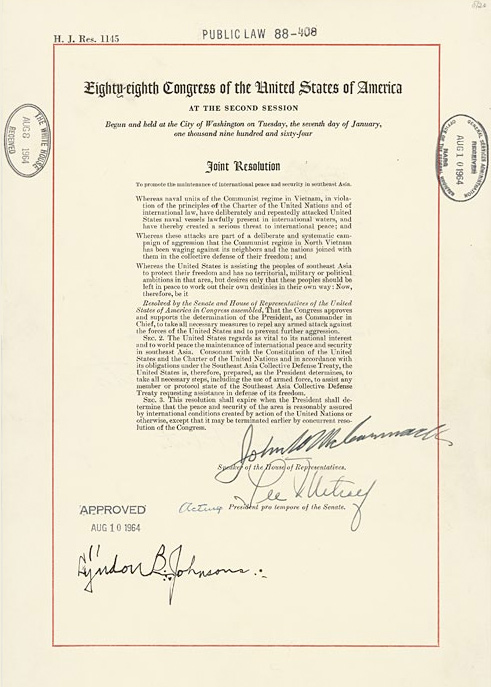 Source: Tonkin Gulf Resolution, United States Congress, Wikimedia
Source: Tonkin Gulf Resolution, United States Congress, Wikimedia
The Gulf of Tonkin
Events in the Gulf of Tonkin (see below) triggered U.S. involvement in the Vietnam War and set off an uneasy balance between the powers of the executive branch (President) and the legislative branch (Congress) during wartime. In July/August of 1964, U.S. destroyer ships were scouting the coastline of North Vietnam in the Gulf of Tonkin. According to reports, the ships were fired upon by North Vietnamese prompting, President Lyndon B. Johnson to order air strikes.
Two days later, at the request of President Johnson, Congress passed a resolution called the Gulf of Tonkin Resolution that gave the President authority
"to take all necessary measures to repel any armed attack against the forces of the United States and to prevent further aggression."
--Gulf of Tonkin Resolution (1964)
In other words, the Gulf of Tonkin Resolution authorized the executive branch to use military force (for as long as needed) against an enemy without ever having to seek a formal declaration of war from Congress.
Below is the official copy of the Gulf of Tonkin Resolution:
 Source: Tonkin Gulf Resolution, United States Congress, Wikimedia
Source: Tonkin Gulf Resolution, United States Congress, Wikimedia